Anyone new to SEO learns two things right away.
The first is that you need to process a lot of data if you want to succeed; and the other is that the best place to get that data is Google Analytics.
The analytics platform serves information collected directly by the search engine. True, it delivers more than just the SEO data, making it all the more enticing for entry-level SEOs.
There is a problem, however. As anyone working on an enterprise website will attest, driving search visibility requires even more information. You need insights to plan successful initiatives, data to overcome traffic dips, and competitive intelligence to identify new opportunities.
Only an enterprise SEO platform can deliver that information to the depths necessary to improve search visibility.
To understand why, we must first start with some basics.
Why Google Analytics?
Google Analytics (I’ll refer to it as GA in this post) helps track and analyze an incredible amount of information about a website, from overall performance to insights about the people viewing it.
What’s making it even more exciting to use is the fact that GA data extends far beyond SEO. You can use it to track information about all channels driving your traffic. You can also correlate it with data about visitors, their demographics, technology, website behavior and so much more.
In short, GA tells you basically everything you need to know about your visitors.
Despite the steep learning curve, SEOs worldwide find it useful to analyze their website traffic and performance.
When you work on an enterprise-level site, however, with its thousands of pages driving hundreds of thousands of visits, you need more data. Much more of it, in fact. And, in this case it's quality - not quantity - of data that matters most.
Why is Quality of the Data So Critical for SEO?
When your goal is to push a large website up in rankings and drive organic visits, the quality of information you use to do it will make the difference between owning the SERPs and struggling even to show up there.
So does the type of data you acquire.
Without a doubt, Google Analytics excels here as well. Dive deep into its reports, and you’ll discover detailed information about all aspects of your site’s visibility.
Take the most common SEO KPIs – organic traffic, conversions or traffic to various site sections – for example. Much of this data resides in the Google Analytics reports already.
The Acquisition report reveals everything about where your visitors came from and how they’ve found your website.
Various reports in the Audience section tell you more about those people. With the Behavior tab, you can review your content’s performance, among other things. Monitoring the Conversions tab helps keep track of the site’s goals.
All of which deliver an incredible amount of data to help drive SEO strategies forward.
The problem? To succeed, enterprise SEOs need even more information. Or at least, they need to build upon the Google Analytics data with additional insights to gain the fullest picture of their strategies.
Expanding Google Analytics Data with an SEO Platform
#1. Keywords Driving Traffic
Introducing the term, “not provided,” caused a stir among SEOs, and rightly so. Up until that point, we had all the information about keywords driving traffic to the site. SEOs used that information to plan future actions.
Knowing which keywords engage customers the most delivers critical insight about your target audience, after all.
It helps you understand the intent behind organic searches. With the keyword data, you can analyze your non-brand-related traffic more accurately. Not to mention, improve keyword targeting and on-page optimization.
The challenge? Google Analytics doesn’t hold much of this data. Up to 95% of the keyword information resides behind the dreaded “not provided” label, after all. Although, it’s worth pointing out that you can incorporate the keyword data from the Search Console in GA as well.
However, using the power of machine-learning, seoClarity’s Search Analytics reveals close to 100% of queries you can’t find in Google Analytics.
It doesn’t stop there. With Search Analytics, you can correlate this data with other information from your Google Analytics account directly in seoClarity to gain further clarity about your traffic.
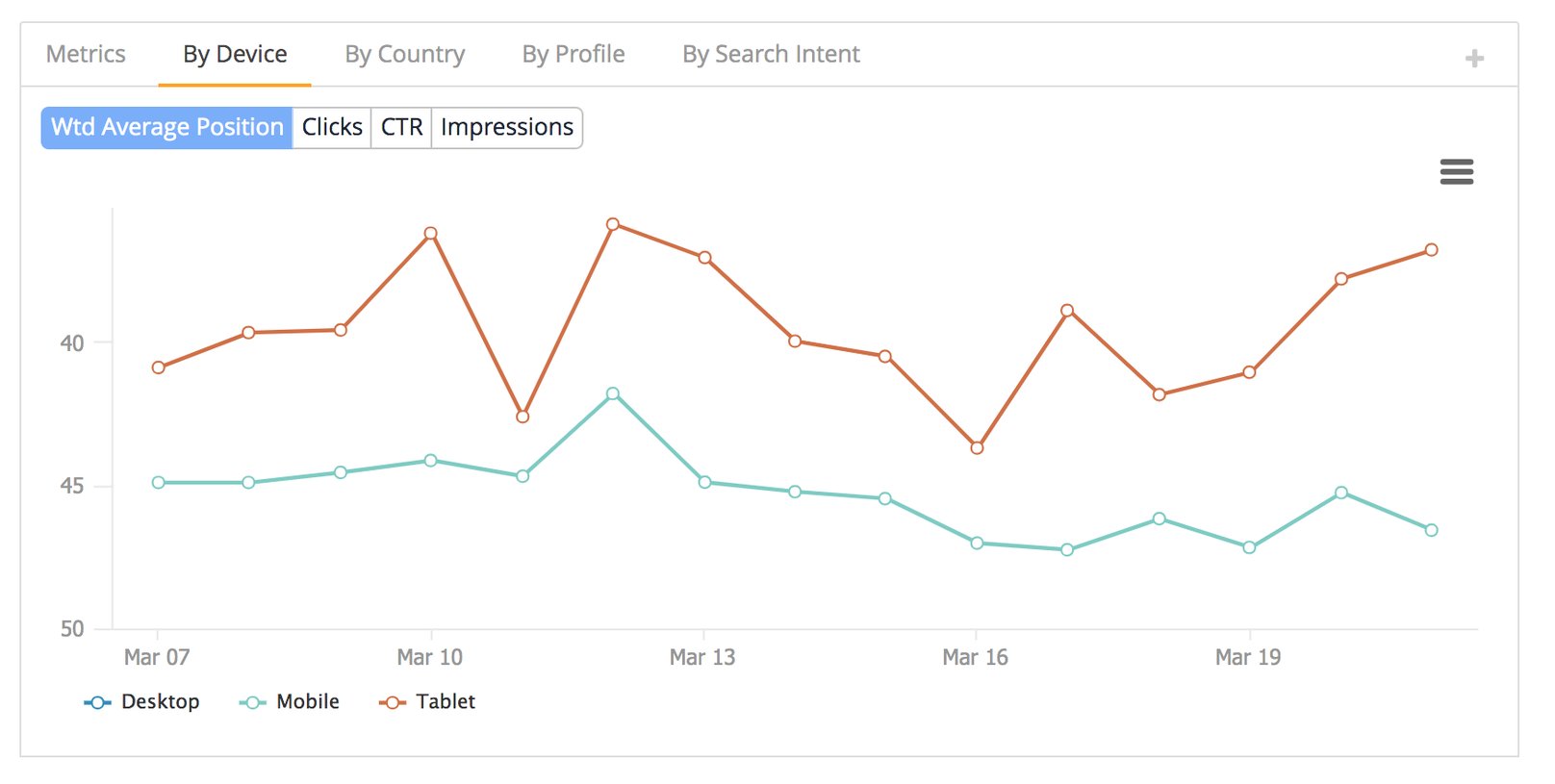
(Search Analytics keyword report in seoClarity)
#2. The Search Intent
Google Analytics displays incredible information about your traffic. You can review traffic levels, channels and their effectiveness, user engagement and so much more.
Oftentimes, however, when you try to find out why people visited your site or the reasons for a peculiar traffic event, you’re left with assumptions only.
That’s only because you cannot correlate multiple data sources to gain a much clearer picture of what happened in the tool.
Clarity Grid, however, let’s you correlate anything with anything. You get real-time insight into all of your Google Analytics data and more, with no artificial restrictions, at that.
Just some of the tool’s capabilities include:
- Brand vs. Non-brand traffic comparison,
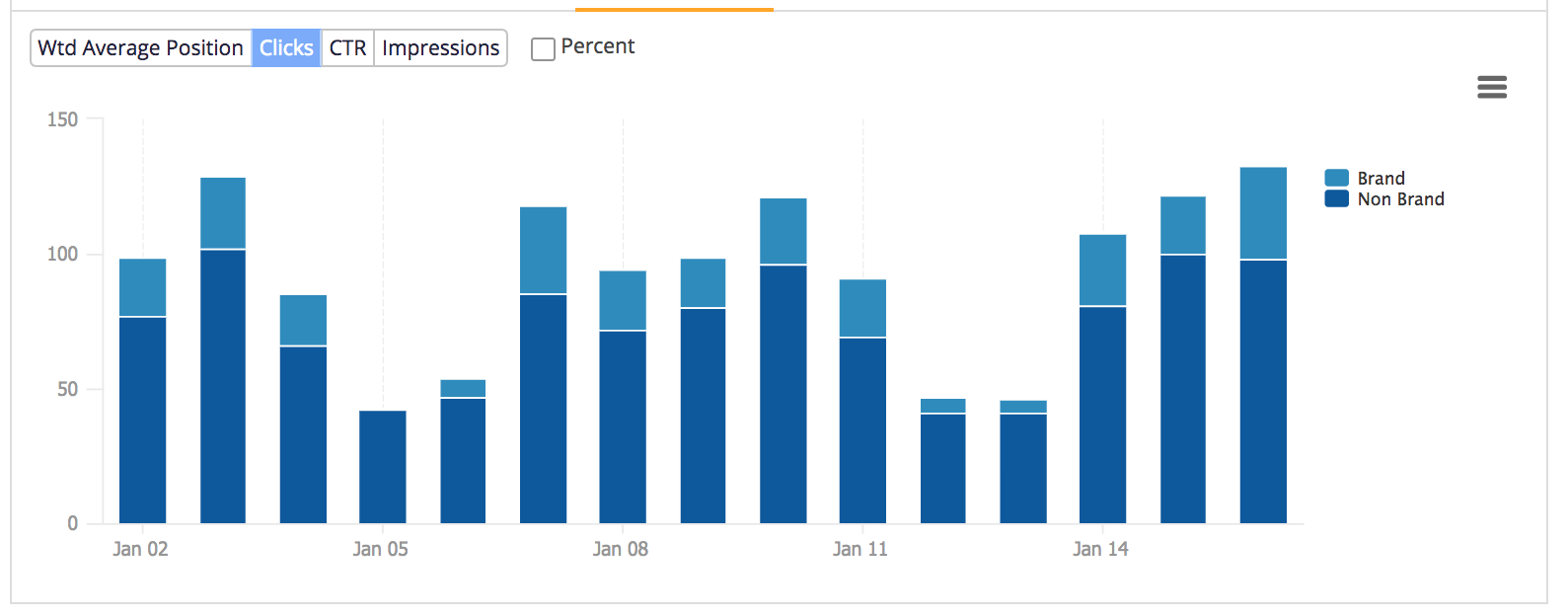
- Year over Year reports identifying trends,
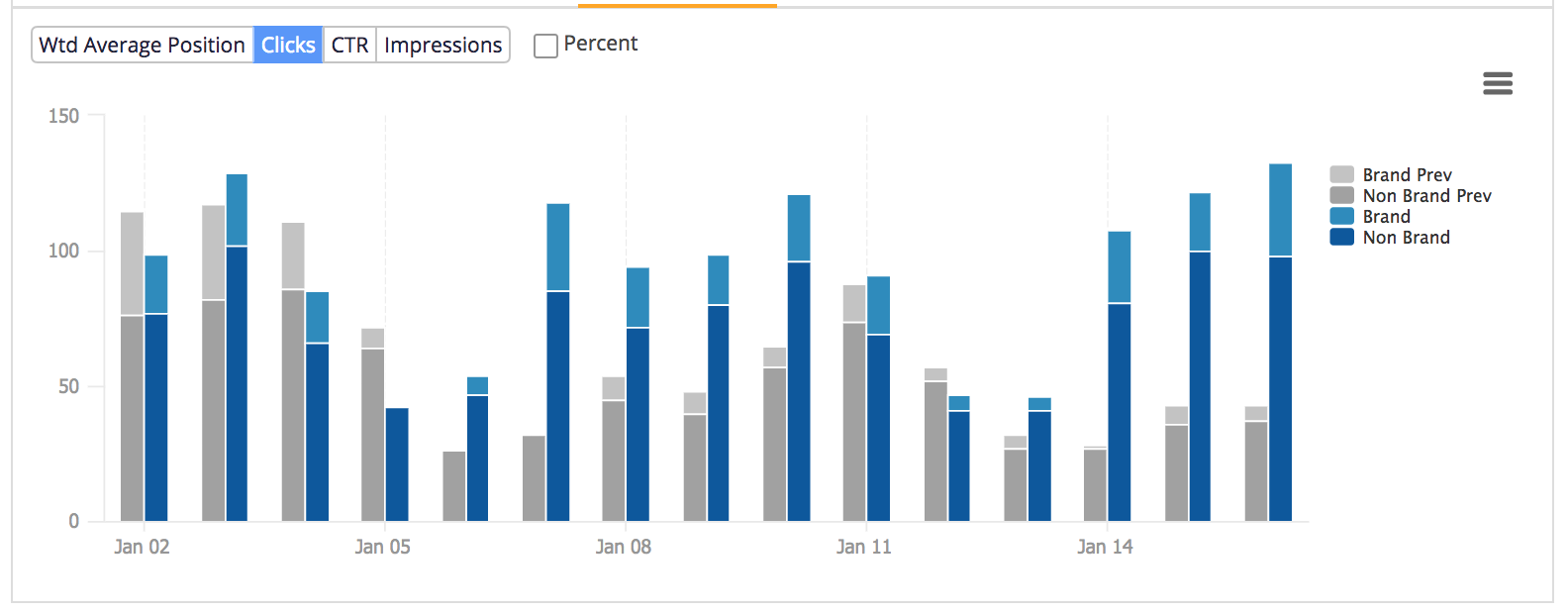
... and much, much more.
#3. Correlating Traffic Changes with Other Factors in Real-time
Similarly, Google Analytics provides an incredible overview of the site’s traffic, but it rarely delivers the full information you need to understand why a major change has occurred. You often can’t tell from its data whether it was a technical issue, an algorithm update or perhaps just a seasonal fluke!
An enterprise SEO platform, on the other hand, allows correlating traffic data with other factors to identify the reasons for various traffic shifts.
A particular capability that’s useful for such analysis is Rank Intelligence. It allows an on-the-fly analysis of all your ranking data, for all keywords that you track that you can then compare with any competitor you’d like.
In short, it provides intelligent rank tracking and analysis for Enterprise SEOs.

#4. Diving Deeper into Ranking Factors
Page speed, on-page SEO, links and countless other factors contribute to how well your content ranks in the search.
Which also means that to improve your search visibility continuously, you need to gain a deep insight into those ranking factors.
For one, you need to be able to correlate many of them with other data to create the full picture of your site optimization.
Let’s consider page speed for example. It has become one of the most critical ranking factors. And recently, with the launch of the mobile-first index, it’s role has grown even further.
Google Analytics has been providing a page speed score and suggestions already through their PageSpeed Insights. I can't stress its usefulness enough.
However, at times, you may have to evaluate the factor’s effect on specific areas of the site. With an enterprise platform, you can do that. You can correlate page speed with engagement metrics, rankings, and CTR to get a fuller picture whether the current page speed affects the site negatively.
What’s more is that by using a platform without artificial restrictions, you don’t have to worry about reaching data limits and having some information limited from view. seoClarity imposes no restrictions on the amount of data, metrics, and capabilities you can process, view or correlate to solve your SEO challenges.




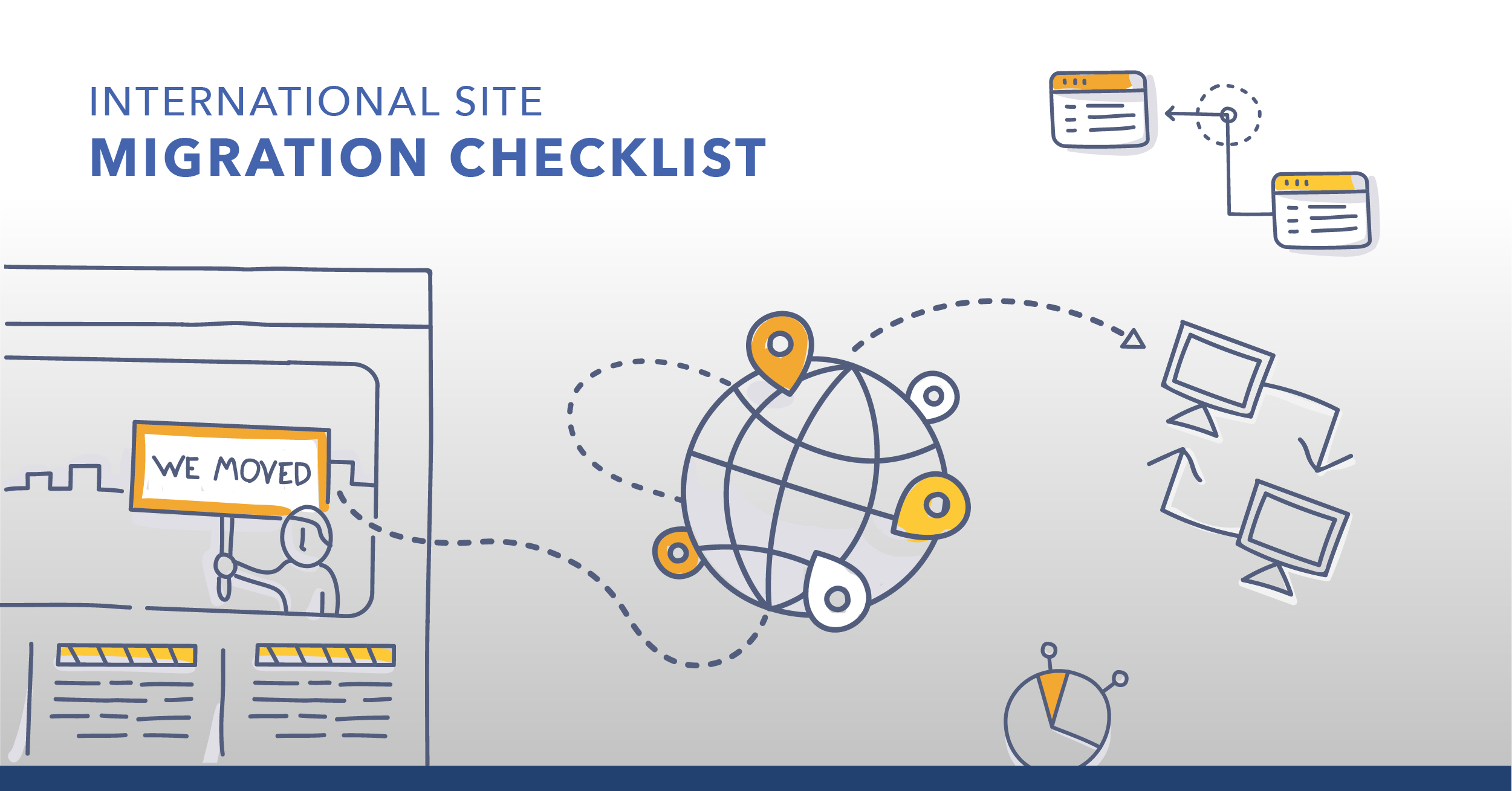
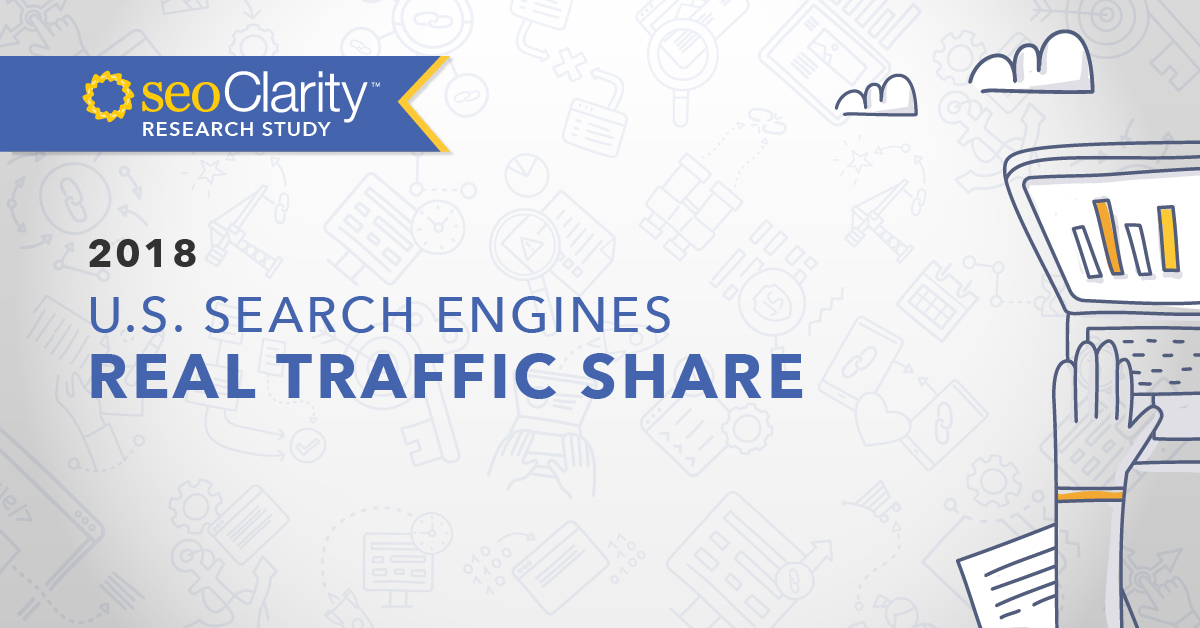

1 Comment
Click here to read/write comments